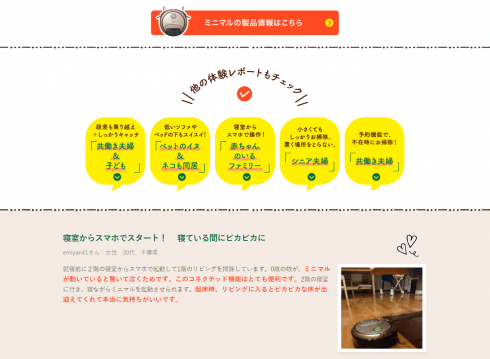Stagflation is inevitable. Where should limited management resources be invested?
Today's narrator
 CEO Seiichiro Fujiwara CEO Seiichiro Fujiwara After marketing financial products and establishing a venture capital firm, he founded eLife Inc. 1999. Hobbies include marine sports and snow sports. Dog lover. |
Hello, I am Fujiwara, CEO of eLife Inc.
In this issue, I would like to share my thoughts on what kind of advertising and marketing strategies companies should adopt in the future in light of the recent global situation and increasingly severe economic trends.
Due to the Corona disaster that has been continuing for two years and the effects of the Russian-Ukrainian war, "stagflation" is said to be an inevitable situation in which prices of goods and services in the world continue to rise despite the recession.
This is arguably the worst situation for Japanese companies, especially many of our client companies. Many companies, to put it bluntly, are in the business of importing raw materials from overseas, processing them, and selling them. A situation where raw materials prices soar while consumers' purse strings tighten is not a situation that is usually welcomed.
Unless there is a ceasefire in the war in Ukraine or a sharp increase in inbound from China due to the full lifting of the lockdown, it looks like it will be difficult for a while.
Many companies in difficult circumstances will probably steer toward reducing their advertising and marketing expenditures. However, whether this is really the right course of action is the issue we would like to consider this time.
Why you should dare to advertise during a recession

Looking back in history, the most recent and most similar situation that comes to mind is the oil crisis of the 1970s.
As was the case this time, a number of companies cut back on their advertising expenditures. However, it is well known that companies that dared to advertise even in such circumstances, such as TOYOTA MOTOR CORPORATION, subsequently achieved significant growth(Note 1).
(Note 1) Related link: "Five Points of Overseas Marketing Strategies to Overcome Uncertain Times" - Examples of companies around the world that overcame the Great Recession - Info Cubic Japan Co., Ltd.
This seems logical. If everyone else is reluctant, it is a great opportunity to differentiate oneself by daring to take the plunge.
(Even so, most companies cannot afford to do so, so it may just be that "the strong are getting stronger.")
Now, looking at the business strategies of the various companies in the face of the current situation, they appear to be divided into two main directions.
One is to keep prices unchanged by redoubling efforts, despite being placed in a difficult situation due to soaring prices of raw materials and ocean freight costs.
However, we must say that this strategy is not a viable one. For example, according to this survey(Note 2), an increasing number of young people are not buying even cup noodles because they are too expensive. No matter how hard we try not to raise prices, we cannot deny the fact that we are in a state of grinding poverty.
(Note 2) Related link: ~Spring of price hikes: How will consumers respond?~ Survey of attitudes and behavior regarding price hikes in 2022 by Nippon Information Incorporated
Another direction that could be taken is to strive to "raise prices" by creating value-added products.
A clear example of success is TWINBIRD CORPORATION, a household appliance manufacturer. With its new brand strategy, the company posted sales of approximately 12.9 billion yen for the fiscal year ended February 28, 2010, and its gross profit margin rose 1.6 percentage points from the previous year, despite an increasingly difficult business environment. Sales of coffee makers and steam oven ranges, which are near twice the price of competitors' products, are steadily increasing, contributing to improved profitability(Note 3).
(Note 3) Related link: "Ingenuity to raise prices" rather than "Efforts not to raise prices" - "Price art" to create conviction - This is the method of five companies, Nikkei Business Publications, Inc.
Raise prices by adding value. The most difficult part of following this strategy is still "getting people to understand the added value." "Compared to similar products from other companies, this is so much cheaper!" is understandable to anyone. Compared to this, the difficulty of spreading understanding of added value increases overwhelmingly.
I believe that advertising plays a role in overcoming these high barriers and helping people understand the added value of a product or brand. This is why I say, It is precise because we are in a difficult business environment that it makes sense to venture out rather than cut back on advertising expenses.
The biggest challenge is getting people to understand the added value
This is a bit of an ego-stroking, but the "CSA" system we advocate seems to have a high affinity with these situations and objectives.
It is difficult to explain in a simple way the added value that has never existed in the world with a short and concise message such as those used in mass marketing. however, if you suddenly give a complicated explanation to the average consumer, he or she will not understand it, or even listen to it in the first place. "CSA" system can solve such a dilemma.
As we have explained several times in the past on this blog regarding CSA, if you can successfully get highly sensitive creators (C) on your side, they will spontaneously create content on behalf of the company that expresses the added value of the product in an easy-to-understand manner.
In addition to a deep understanding of the added value and the ability to think creatively and express themselves, creators also have the perspective of an ordinary consumer. Because of this, they are more likely to create content that is easy for audiences to understand and engage with.
Then, once the feedback from supporters (S) and audience (A) begins to function in a loop that stimulates creators to create more, companies can continue the mechanism semi-automatically without spending a great deal of money.
From this economic perspective, it seems to me that CSA will bring significant benefits in the coming recessionary period.

For example, one example we have worked on in the past is the "buzz project" for Hitachi, Ltd. "Minimal RV-EX20" robot cleaner.
For this project, we first asked five members of our platform "buzzLife" to actually use the products and created web content based on their feedback.
Strictly speaking, this is not an example of using CSA in that there is no supporter intervention, but by using the voices of consumers at different life stages as part of the product introduction(Note 4), the company has created content that is not self-serving. It has been able to lead to an understanding of the added value of the product by those who are considering purchasing it.
(Note 4): Related link: Robot Cleaner RV-EX20 Hitachi Home Appliances|Cleaner
Let me also introduce one more case study of Morinaga&Co., Ltd. 's CSA community "Angel Plus."

C(creators) post their own ways of enjoying the "rare DARS" and S(supporters) like and comment on them. and comments, and A(audience) enjoys viewing them.
In "Angel Plus," users (creators) post photos of Morinaga&Co., Ltd.'s products, and supporters can freely comment on the photos in the "Gallery." One post in the "Gallery" triggered a small movement regarding "DARS," one of Morinaga&Co., Ltd.'s signature products.
"DARS" chocolates are usually stamped with "DARS" on each piece, but on rare occasions, they are stamped differently than usual and are called "rare DARS" by avid users.
When this photo of the "rare DARS" was posted in the "Gallery," many comments were posted by supporters, and the community became very excited. From there, the buzz about the "rare DARS" spread outside the community. As a result, we succeeded in increasing the external inflow to the site.
The company has not officially announced the existence of the "rare DARS." Rather, it is precise because the company has not officially announced the existence of the "rare DARS" that the fun and joy of exploring them was born, and the community was enlivened. I believe that this is the reason why the company was able to create a larger movement.
I believe that communicating the added value of products to consumers by making good use of such a CSA mechanism is a very effective corporate strategy in times of stagflation.
Investment in "in-house e-commerce from CSA"

"Digimon Partners," TOEI ANIMATION CO., LTD.'s Digimon fan community, has an e-commerce website within the community, and in addition to existing merchandise sales, a project is underway to collect, realize, and sell members' ideas.
The hurdle of "getting people to understand the added value" mentioned earlier exists not only with respect to consumers, but also with distributors. Without the understanding of distributors, manufacturers will not be able to secure sales space for their products.
In this sense, it may be said that the importance of having one's in-house e-commerce and selling directly to consumers is increasing, although efforts to gain the understanding of distributors will naturally continue. CSA the advantage of having your in-house e-commerce website is that you are not forced to direct consumers to your own e-commerce website, since your e-commerce website is mainly developed on the web.
In these difficult times, the question is where to invest limited management resources, and i believe that "in-house e-commerce from CSA" is a possible way to fight in these times. this is my opinion and suggestion to all of you.



